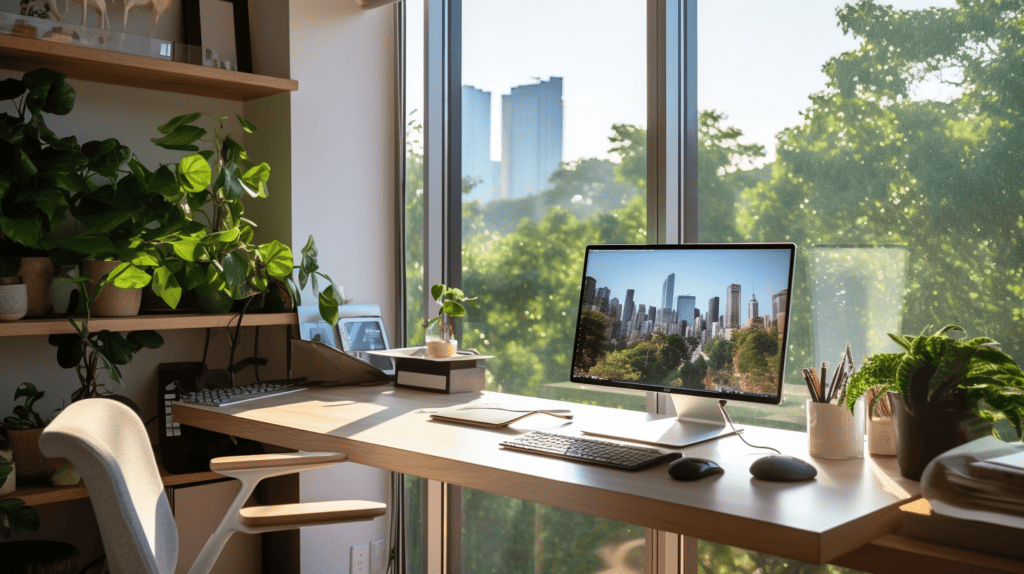Hey there, my busy friends! I know how hectic life can get and how easy it is to feel overwhelmed. That’s why I want to share some quick tips and hacks to help you optimize your time and be more productive, even in just 2 minutes of your time.
Time management is key to maintaining a healthy work-life balance and achieving your goals. In this section, I’ll provide you with practical advice on making the most of your limited time. From effective routines to prioritizing tasks, you’ll learn how to get more done in less time.
Key Takeaways:
- Managing time effectively is essential for a balanced life
- Simple routines can make a big difference
- Maximizing productivity in short timeframes is achievable
Time Management Tips for Busy Individuals
As a busy professional, time is a precious commodity. However, with efficient routines and effective time management, you can maximize your productivity and accomplish more in less time. Here are some time management tips that have worked for me:
- Create a to-do list: Start each day by creating a list of tasks that need to be accomplished. Prioritize them in order of importance and tackle the most critical items first.
- Set time limits: Give yourself a specific amount of time to complete a task and stick to it. This helps to avoid getting bogged down and wasting time on unimportant details.
- Eliminate distractions: When working on important tasks, turn off notifications on your phone and limit distractions from coworkers or outside sources.
- Take breaks: Although it may seem counterintuitive, taking short breaks can actually increase productivity. Use this time to stretch, walk around, or practice mindfulness exercises to recharge your energy levels.
- Delegate: If possible, delegate tasks to others who can help you accomplish them more efficiently. This frees up more time for you to focus on high-priority tasks.
By incorporating these time management tips into your daily routine, you can become more efficient and productive while still having time for the things you enjoy.
Health and Wellness in 2 Minutes
As a busy individual, finding time to prioritize our health and wellness can be challenging. However, with the 2 Minutes Of Your Time approach, we can take small steps throughout the day to promote well-being and reduce stress.
In just a couple of minutes, we can perform exercises, stretches, breathing techniques, and mindfulness exercises that benefit our physical and mental health. Here are some examples:
| Activity | Description |
|---|---|
| Stretching | Stand up and stretch your arms overhead, taking a few deep breaths. This can relieve tension in the neck and shoulders and increase blood flow. |
| Deep Breathing | Sit in a comfortable position and take deep, slow breaths in through your nose and out through your mouth. This can help reduce stress and increase focus. |
| Mindfulness | Take a moment to focus on the present moment, observing your thoughts and feelings without judgment. This can help reduce anxiety and increase self-awareness. |
By incorporating quick health and wellness practices into our daily routine, we can optimize our time usage and enhance our overall well-being.

Boosting Productivity with Microbreaks
As someone with a busy schedule, I know firsthand how easy it is to feel overwhelmed and burnt out. That’s why I’ve found that taking short breaks throughout the day can actually increase my productivity. It may seem counterintuitive, but studies have shown that taking brief pauses can improve focus and work efficiency.
The key is to use these microbreaks effectively. Instead of mindlessly scrolling through social media or checking your email, try incorporating activities that will recharge your energy and enhance your well-being. Here are some suggestions:
| Activity | Description |
|---|---|
| Stretching | Stand up and stretch your arms, legs, and back. This helps to reduce tension and increase blood circulation. |
| Mindfulness Exercises | Close your eyes and take a few deep breaths. Focus on the present moment and let go of any distracting thoughts or worries. |
| Walking | Take a quick walk around your office or go outside for some fresh air. This can help to clear your mind and increase creativity. |
Remember, it’s important to take breaks that are appropriate in length and frequency for your particular work schedule. By incorporating these activities into your routine, you’ll find that you’re better able to stay focused, energized, and productive throughout the day.
Quick Organization Tips for a Clutter-Free Life
As someone who is always on-the-go, I understand the importance of having an organized environment to maximize productivity and reduce stress. Here are some quick tasks you can do in just a couple of minutes to maintain a clutter-free life:
- Designate a spot for your everyday items such as keys, wallet, and phone to avoid misplacing them.
- Clear your workspace before starting a new task, so you have a clean slate to work with.
- Take a few minutes to sort through a pile of papers, bills, or receipts and decide whether to keep, shred, or toss them.
By taking a few minutes each day to organize your space, you’ll save time searching for lost items, reduce visual clutter, and feel more focused and in control.

Enhancing Focus with Time Blocking
One technique that has helped me maximize my productivity is time blocking. This involves breaking down my day into specific time slots and assigning tasks to each one. By doing this, I eliminate distractions and stay focused on one task at a time.
How to Time Block
The first step in time blocking is to identify your most important tasks for the day. These can be work-related or personal tasks such as exercise or meal planning. Next, allocate a specific amount of time for each task. For example, if I have a report due at the end of the day, I might allocate 2 hours for writing it.
It’s important to be realistic when allocating time for tasks. Don’t try to cram too many tasks into one time slot, as this can lead to feeling overwhelmed and stressed. Instead, break down larger tasks into smaller, more manageable ones.
The Benefits of Time Blocking
One of the biggest benefits of time blocking is that it helps prioritize tasks. By assigning specific time slots to tasks, I am able to focus on the most important ones without getting sidetracked by less important ones. This allows me to make the most of my limited time.
Time blocking also helps reduce distractions. I turn off my phone and email notifications during time blocks, which helps me stay focused on the task at hand. This has resulted in higher quality work and faster completion times.
Overall, time blocking has been a game changer for my productivity. It takes a little bit of effort to get started, but the benefits are well worth it!
Quick Ways to Improve Mental Well-being
As someone who is always on the go, I understand how difficult it can be to find time for self-care. However, taking just a couple of minutes out of your day to focus on your mental well-being can have a profound impact on your overall health and productivity. Here are a few quick activities that have helped me:
- Practice gratitude: Taking a moment to reflect on what you’re grateful for can help shift your perspective and boost your mood. Try writing down three things you’re thankful for every day.
- Breathe deeply: When you’re feeling stressed or overwhelmed, deep breathing exercises can help relax your mind and body. Try inhaling for four counts, holding for seven, and exhaling for eight.
- Engage in a hobby: Taking a break to do something you enjoy can help reduce stress and boost creativity. Whether it’s reading, drawing or playing an instrument, set aside a few minutes each day to engage in a hobby you love.
Remember, taking care of your mental well-being should always be a priority. By incorporating these quick tasks into your daily routine, you’re making a commitment to a healthier, more balanced lifestyle.

Streamlining Daily Tasks with Technology
Technology has become an integral part of our daily lives, and it can also help us to be more productive. By using productivity apps, automation tools, and shortcuts, we can streamline our daily tasks and save time. Here are some quick tips for using technology to enhance productivity:
- Use productivity apps: There are many productivity apps available that can help you manage your time more effectively. Apps like Trello, Asana, and Todoist can help you stay on top of your to-do list and prioritize tasks, while apps like RescueTime can help you track how you spend your time.
- Automate tasks: If there are certain tasks that you do regularly, consider automating them. For example, you can set up automatic bill payments, use email templates for common responses, or schedule social media posts in advance.
- Use keyboard shortcuts: Keyboard shortcuts can save you a lot of time when you’re working on a computer. For example, you can use ctrl/cmd + c to copy text, ctrl/cmd + v to paste text, and ctrl/cmd + z to undo an action.
- Take advantage of voice assistants: Voice assistants like Siri and Google Assistant can help you to complete tasks quickly and efficiently. You can use them to set reminders, make phone calls, and even order groceries.
- Use browser extensions: Browser extensions can help you to be more productive by adding extra functionality to your web browser. For example, the Pocket extension allows you to save articles to read later, while the Grammarly extension can help you improve your writing.
By incorporating these technology tips into your daily routine, you can optimize your time usage and get more done in less time. Just remember to use technology as a tool to help you be more productive, rather than as a distraction.
Quick Tips for Effective Communication
As a professional copywriting journalist, communication is a crucial part of my work. I have learned that effective communication is not just about being articulate, it’s also about conveying ideas clearly and concisely. Here are some quick tips to improve your communication skills:
- Be clear and concise: Avoid using complex jargon or convoluted sentences. Instead, focus on using simple language and clear messaging to get your point across.
- Active listening: Listening is just as important as speaking. When communicating with someone, pay attention to what they are saying and respond thoughtfully. This shows that you respect their input and ideas.
- Use proper grammar and punctuation: Correct grammar and punctuation can make a big difference in how your words are perceived. Double-check your writing before hitting send to ensure that you are conveying your message accurately.
By implementing these quick communication tips, you can optimize your time usage and improve your effectiveness in both personal and professional settings.
Conclusion on 2 Minutes Of Your Time
Time is an invaluable resource, and making the most of it is crucial for living a fulfilling life. By utilizing the quick tips and strategies mentioned in this article, you can optimize your time usage and enhance your productivity and overall well-being.
Remember to prioritize tasks, take microbreaks, streamline daily tasks with technology, and practice quick health and wellness exercises. Incorporating these practices into your daily routine can help you achieve your goals and lead a more fulfilling life.
Take action now
Start implementing these tips today! Challenge yourself to spend just 2 minutes each day on one of the suggested strategies. Over time, these small habits can add up to significant improvements in your productivity and overall quality of life.
So what are you waiting for? Take on the challenge of optimizing your time usage, and see the positive impact it has on your life.
FAQ on 2 Minutes Of Your Time
Q: What is the purpose of “2 Minutes Of Your Time”?
A: “2 Minutes Of Your Time” provides quick tips for a busy life, focusing on time management and productivity hacks that can be accomplished in just a couple of minutes.
Q: What topics are covered in the article?
A: The article covers time management tips, health and wellness practices, boosting productivity with microbreaks, quick organization tips, enhancing focus with time blocking, improving mental well-being, streamlining daily tasks with technology, and quick tips for effective communication.
Q: How many paragraphs are in each section?
A: The relevant number of paragraphs varies for each section, ranging from 2 to 3 paragraphs.
Q: What is the conclusion of the article?
A: The conclusion summarizes the key points discussed in the article and encourages readers to implement the quick tips and strategies for a more efficient and fulfilling life.





Leave a Reply